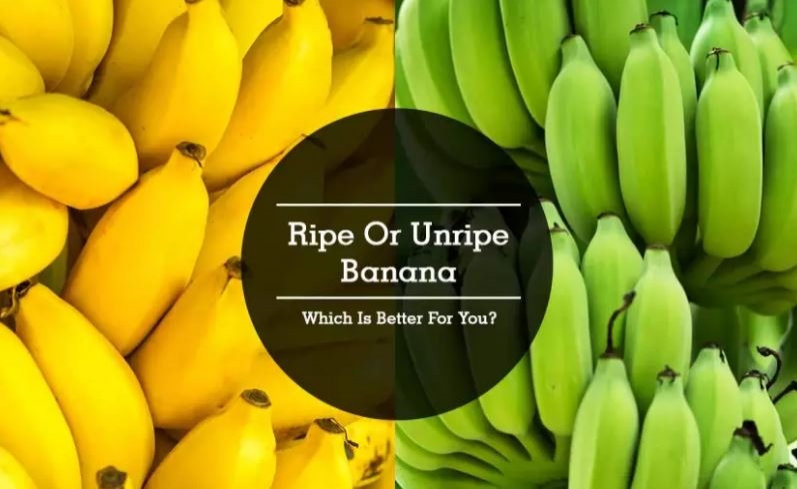Which banana you like or prefer eating- an unripe green or a bright yellow or a ripe spotted banana? When it comes to bananas many of us go well… literally “bananas” for them; after all, they are the nation’s favorite fruit and the original 100-calorie snack! Because, when you look at this fruit, you either think that, 'oh, it’s too ripe' or 'too green'. A banana has two major stages, ripe and unripe. The nutritional value of a banana actually changes as it ripens? Different maturity stages of bananas give different health benefits to your body.
Let’s give you brief Ripe v/s Unripe Bananas: Which are Better for You?
UNRIPE BANANAS
Benefits: One benefit of green bananas is the high resistant starch content. For anyone trying to avoid food with high sugar content, green bananas are an option whereas yellow bananas are not. So those suffering from Type 2 Diabetes can eat the unripe fruit while maybe ripened bananas are not as compatible. Unripe bananas also have probiotic bacteria, a friendly bacterium that helps with good colon health. In addition, green bananas also help you absorb nutrients better, particularly calcium.
Drawbacks: Because antioxidant levels actually INCREASE as bananas age, unripe bananas are lower in this category. Also green bananas may cause some bloating and gas due to the higher resistant starch content.
RIPE BANANAS
Benefits: Because the resistant starch changes to simple sugar when a banana ripens, yellow bananas are easier to digest. The higher glycemic index of ripe bananas shows that they are digested quickly. Bananas also have higher levels of antioxidants as they ripen.
Drawbacks: Studies show that there is some micronutrient loss that happens as a banana ripens. To lessen the number of vitamins and minerals lost, it’s better to store and ripen bananas in the refrigerator. Also, the high sugar content makes ripe bananas something Type 2 Diabetics should avoid.
The Bottom Line: There are benefits on both sides. You could eat unripened bananas or ripened bananas and get the benefits of either one. The only difference is that for Type 2 Diabetics and anyone trying to avoid excess sugar.
Which banana you like or prefer eating- an unripe green or a bright yellow or a ripe spotted banana? When it comes to bananas many of us go well… literally “bananas” for them; after all, they are the nation’s favorite fruit and the original 100-calorie snack! Because, when you look at this fruit, you either think that, 'oh, it’s too ripe' or 'too green'. A banana has two major stages, ripe and unripe. The nutritional value of a banana actually changes as it ripens? Different maturity stages of bananas give different health benefits to your body.
Let’s give you brief Ripe v/s Unripe Bananas: Which are Better for You?
UNRIPE BANANAS
Benefits: One benefit of green bananas is the high resistant starch content. For anyone trying to avoid food with high sugar content, green bananas are an option whereas yellow bananas are not. So those suffering from Type 2 Diabetes can eat the unripe fruit while maybe ripened bananas are not as compatible. Unripe bananas also have probiotic bacteria, a friendly bacterium that helps with good colon health. In addition, green bananas also help you absorb nutrients better, particularly calcium.
Drawbacks: Because antioxidant levels actually INCREASE as bananas age, unripe bananas are lower in this category. Also green bananas may cause some bloating and gas due to the higher resistant starch content.
RIPE BANANAS
Benefits: Because the resistant starch changes to simple sugar when a banana ripens, yellow bananas are easier to digest. The higher glycemic index of ripe bananas shows that they are digested quickly. Bananas also have higher levels of antioxidants as they ripen.
Drawbacks: Studies show that there is some micronutrient loss that happens as a banana ripens. To lessen the number of vitamins and minerals lost, it’s better to store and ripen bananas in the refrigerator. Also, the high sugar content makes ripe bananas something Type 2 Diabetics should avoid.
The Bottom Line: There are benefits on both sides. You could eat unripened bananas or ripened bananas and get the benefits of either one. The only difference is that for Type 2 Diabetics and anyone trying to avoid excess sugar.
























